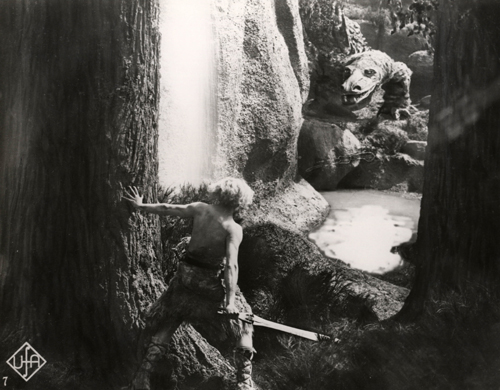Dragon Slayers (or "Why there are no more dragons in Europe")
Dragons play a prominent role in medieval literature. Siegfried is not the only one who has to overcome a beast like that. Tristan also has to slay a dragon in order to help out the Irish king. Slaying dragons, therefore, seems to be one of the basic skills that a Germanic hero has to have. In contrast to Sigfried, however, Tristan doesn't bathe in the dragon's blood, which -quite frankly- is disgusting, but he cuts out its tongue in order to prove his heroic deed.
To cut a long story short, this is why there are no dragons in Europe today. They have all been slain by some "heroes" who had to prove their masculinity by murdering an innocent creature living in the woods. Seriously, the dragons only hurt people when they try to steal the treasures they protect or when they come too close to them. So I guess if they had just left them alone, everything would have been fine. No need to kill those poor things.
Another example for a dragon in Germanic mythology is Níðhöggr who is the one that gnaws at the roots of Yggdrasil, the World tree. Okay, I have to admit that this is kind of a bad dragon since he is basically destroying the world. But he looks cute (see picture below).There is also the giant sea serpent which surrounds Midgard, the world of mortal men. And there is another kind of dragons which are called lindworms. The Swedish children's book author Astrid Lindgren, who also wrote Pippi Longstockings, mentions such a dangerous lindworm in "The Brothers Lionheart".



Sam | October 12, 2012 at 7:57 AM
Just wanted to point out that the dragon in Tristan was actually ravaging the countryside. That's what made Tristan figure he could get the royals to overlook the slaying of the Morholt (the Irish King's champion and the Queen's brother!). Sure, I killed family, Tristan thinks, but I killed the rampaging dragon too! If the dragon had just been sitting pretty, it wouldn't have been much of a gambit.